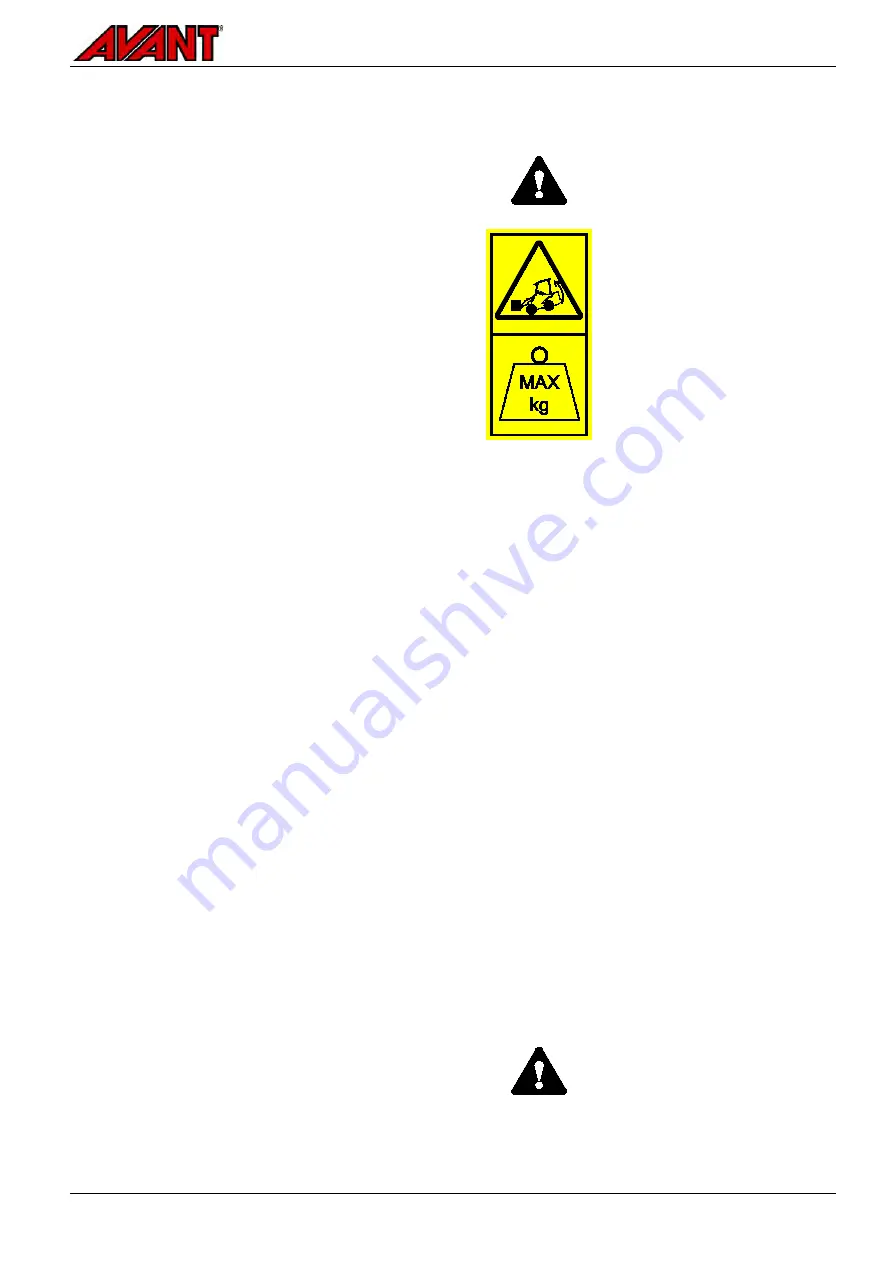
Avant e6
33
Lift capacity
Tipping load is the load at which the rear tyres lose
contact with the ground and the loader begins to tip
forward. Tipping over can happen also on even
ground. If the movement that causes the loss of
stability is not prevented or corrected in time, the
loader can tip over causing potentially serious
personal injuries or even death. Read the
instructions in this manual regarding safe handling of
loads to avoid the situation where the loader will tip
over.
Tipping over can be caused by a single reason, or as
the combined effect of the operating conditions,
movements of the loader, and the work situation.
Avoid the following basic situations to prevent the
loader from tipping over:
too heavy load is being lifted
when the loader boom is moved to another
position, the load moves away from the loader,
reducing the stability of the loader
driving or other movements of the loader affect
the balance of the loader
More information about how to take these factors
influencing the tipping load into account are shown
on page 61.
There are many influencing factors that affect the
stability of the loader. Use the load chart and ROC
table to estimate the load handling capacity of the
loader. Observe the instructions and information
given in this manual.
The lifting capacity and the stability of the loader
are at the best, when:
the ground is level
the loader frame is kept in straight position
the centre of gravity of the load is as close to the
loader as possible
counterweights are fitted to the loader
swinging of the load is prevented and all controls
are used in a calm and careful manner - sudden
movements of the loader or the load can cause
the loader to tip over
See also page 60 for more information about safe
handling of heavy loads and for a list of typical
factors that influence the stability of the loader.
WARNING
Risk of tipping over - Follow
safety instructions.
The lifting
capacity of the loader is limited by
the possibility of tipping around the
front axle.
Pay attention to safe operating
conditions whenever handling
loads or heavy attachments. The
indicated values apply only in
favorable conditions. Read the
instructions in this manual.
To estimate the load carrying capacity of the
loader
There are different representations of the tipping load
available in this manual:
Load diagram
Load chart with pallet forks
ROC table (also as a label on the loader)
Each of these show the same information about the
tipping load of the loader, but in a different way, and
with different details. The information is intended to
help you to avoid exceeding the tipping load with any
attachment.
Any illustration, chart, table, or value of tipping
load and the ROC table are valid only, when:
The ground is firm and level
Loader is stationary or driven max 2 km/h,
with smooth and slow control movements
Driver 75 kg is seated on the driver’s seat
Load is distributed evenly on pallet forks,
with the load centre of gravity at 500 mm
from the vertical part of pallet fork arms. The
weight of the fork attachment is taken into
account in the indicated load values
WARNING
All counterweights affect
stability - Also the driver.
Always
keep in mind: If the driver leaves
the machine, tipping and max.
loads are reduced respectively.



































